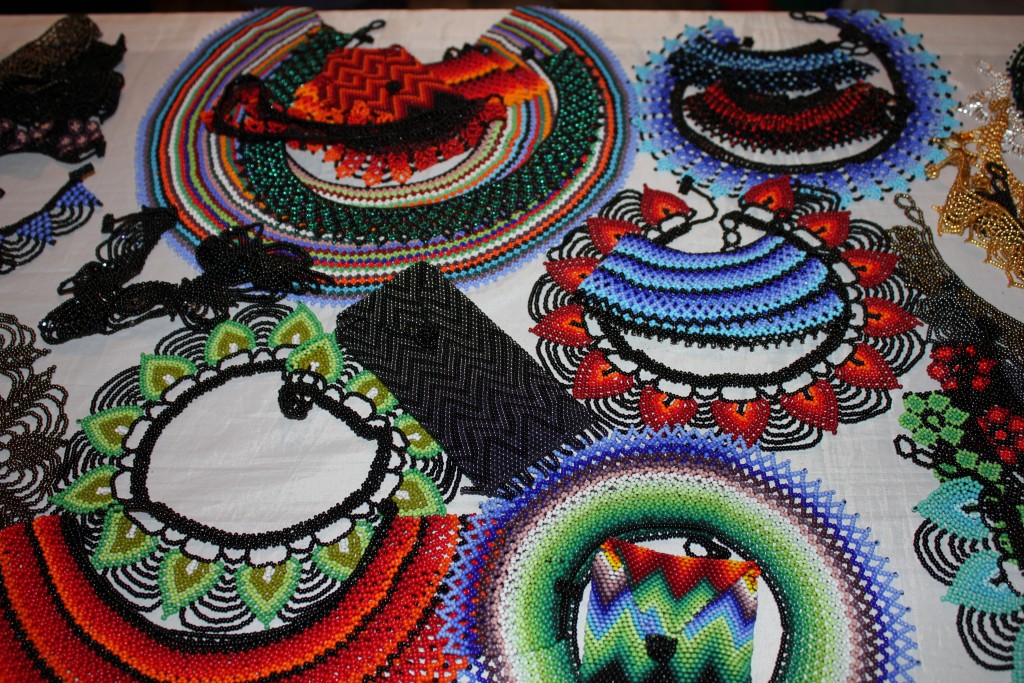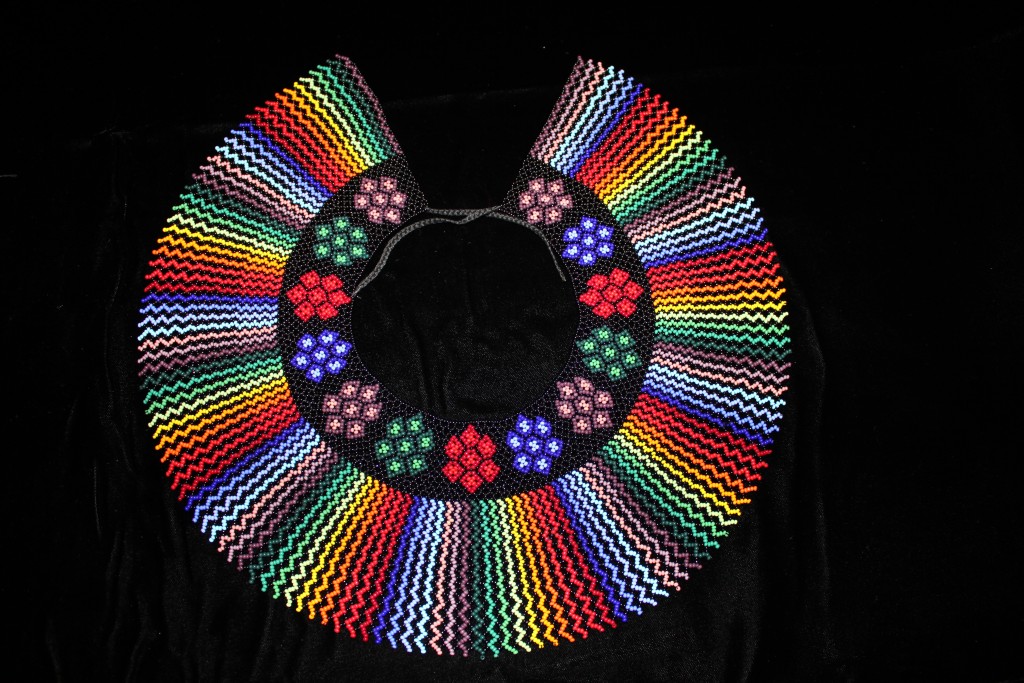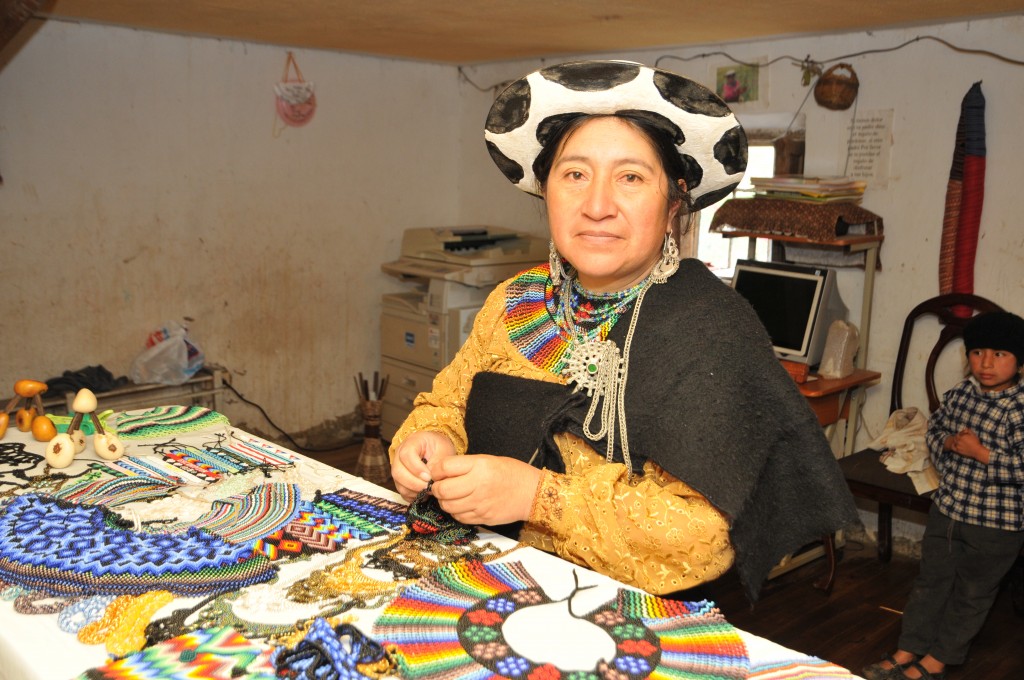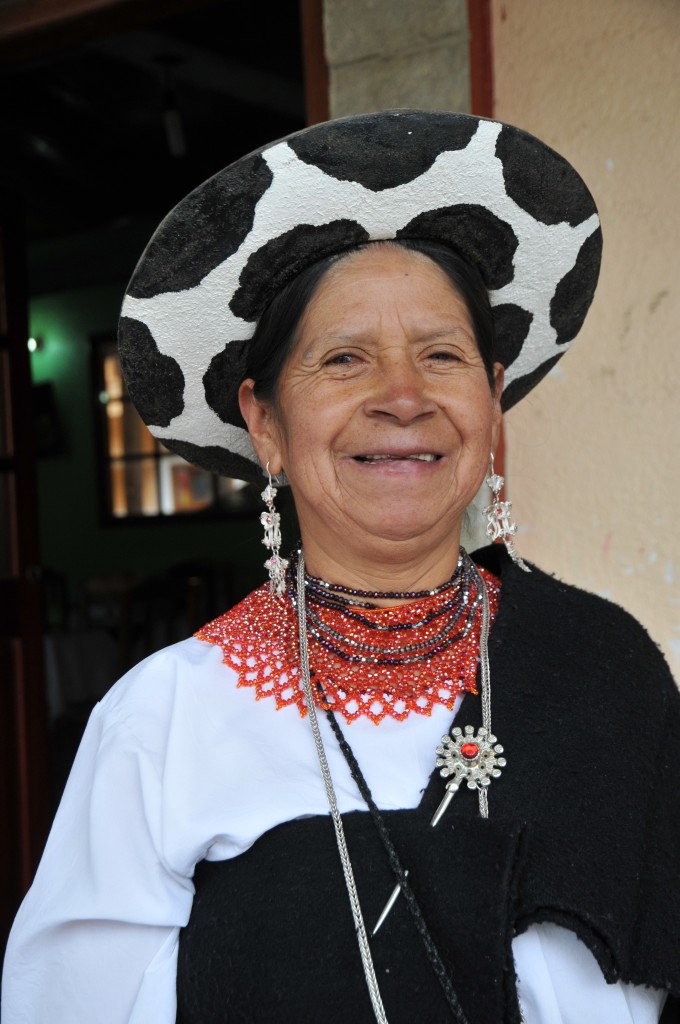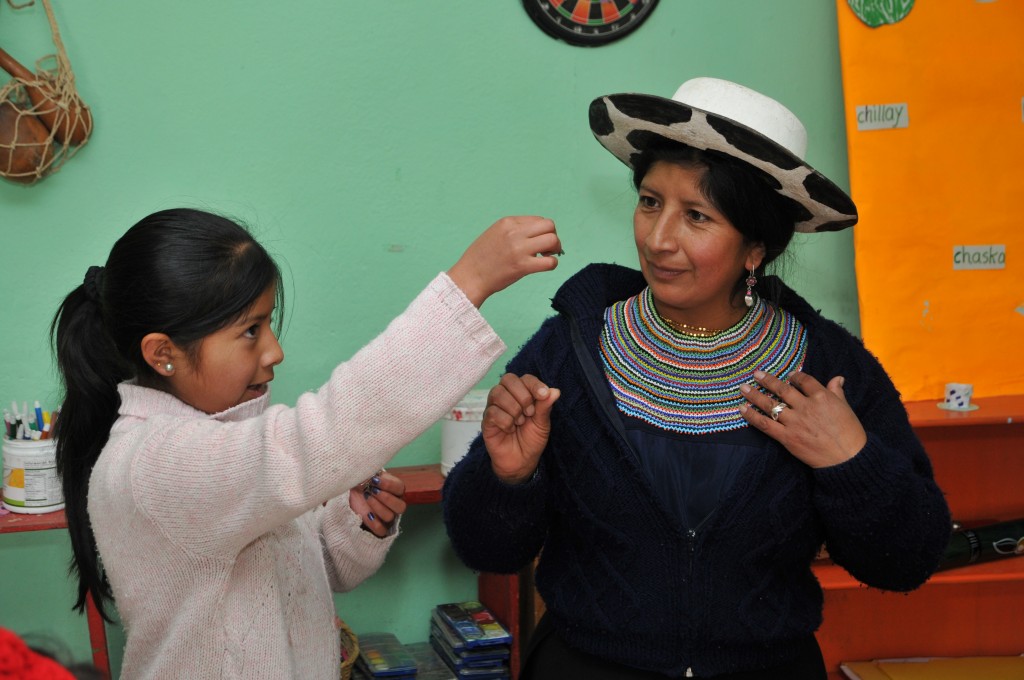Located in the southern Andes-mountains in Ecuador, between the cities of Cuenca and Loja, you find the small village of Saraguro. The area is named for the indigenous Kichwa group who lives there, also called Saraguro. Not only were the Saraguros the only indigenous group in the province to successfully survive the Spanish conquest, they have also managed to retain their customs and way of life and continue to remain the best-preserved indigenous group in all of Ecuador. They are especially known for their distinctive way of dress, their black hats and for women; the amazing collars of multi-stranded glass beads. Traditionally they all wore wide-brimmed white hats made of sheep’s wool with a spotted pattern under the brim, but these are nowadays used mostly for special occasions. Both men and women wear their hair in one single long braid.
They are proud of their Incan ancestry, but their bead art does not come from that heritage. The need for pasture for their cattle led them to cross the Andes into the eastern slopes of Ecuador about a century ago. The Shuar who inhabited that region wore necklaces made of glass seed beads made in the Czech Republic that they acquired through trade up the Amazon River. They traded beads for cheese with the Saraguros. Saraguro girls and women wear the bead collars daily. How the Saraguros learned to weave these beads with techniques unknown to other indigenous peoples of South America remains a mystery. In the early years (until the 1970s) cotton thread was waxed to pass through beads without a needle. It was exceedingly laborious. The introduction of bead needles and nylon thread in the 1970s led to an explosion of creative techniques and patterns that result in the art contained in this catalog. In the current decade, Czech Fire-polished beads (CFP) have reached the Saraguros, and these too have become part of their beadwork. Each piece is carefully and skillfully crafted by a master artisan and people from all over the world travel to this little town to learn and be inspired. The necklaces can be bought from stalls in the city center where the artists also keep on working on their products. Many families have their entire income from the beadwork and they keep on developing new patterns and styles constantly. Regardless of their rather simple life and household up in the mountains, school and education is considered very important and many of the children continue to college and university – changing between two very different ways of lifestyle, but always very proud of their heritage and traditions.
